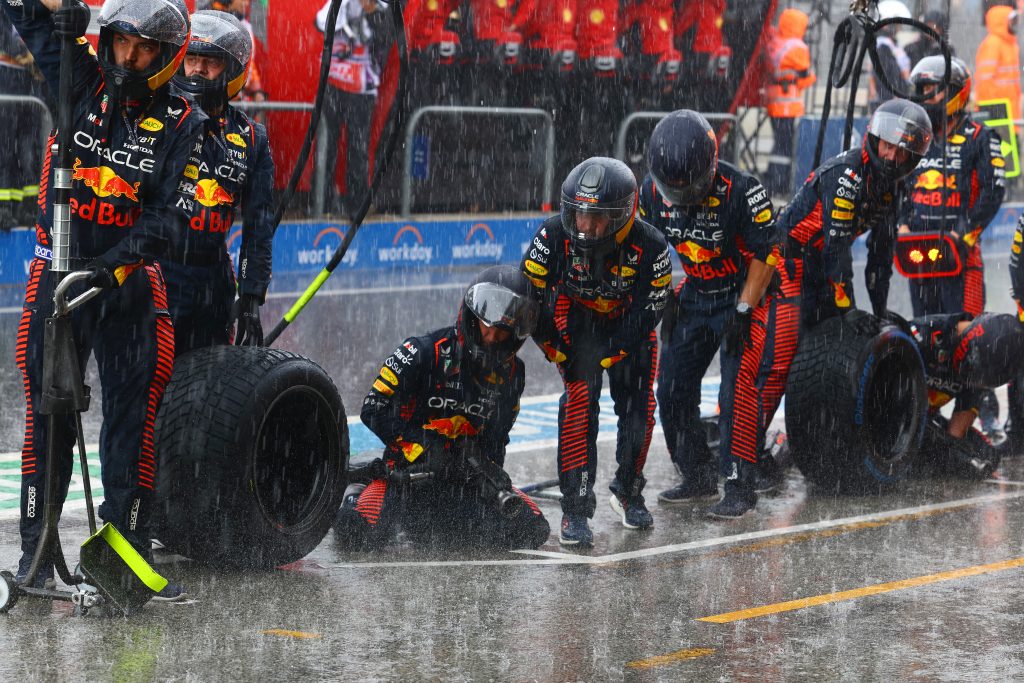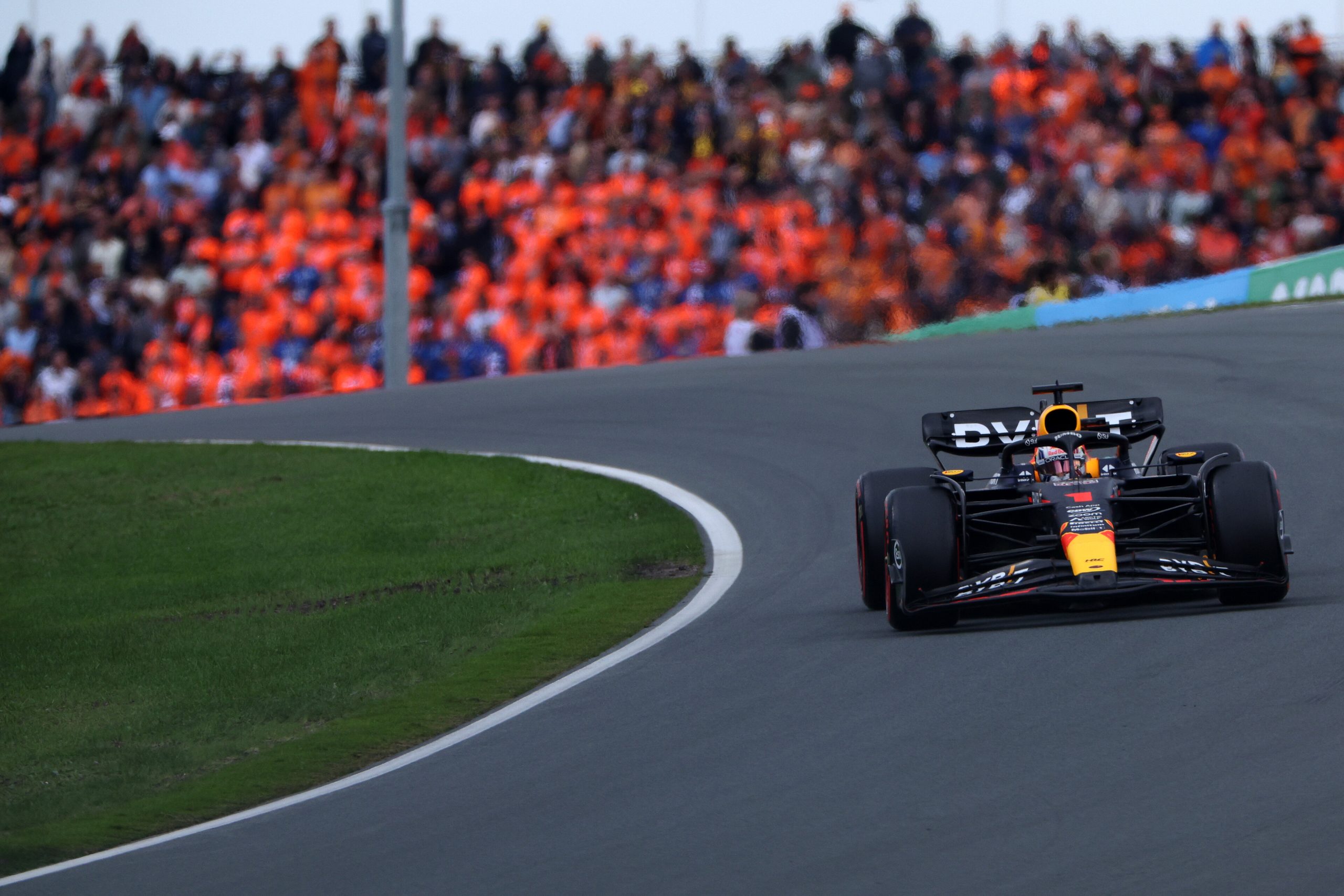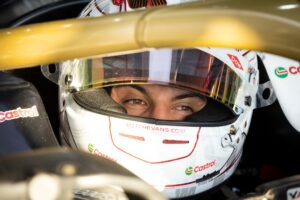The Dutch Grand Prix is over and in the middle of the chaos of this race weekend, Max Verstappen equalized Sebastian Vettel’s record of 9 wins in a row. How did Red Bull help their lead driver?
Dutch Grand Prix, the 13th race of the season. With a sea of orange present, the pressure to keep his winning streak going at Zandvoort was certainly on for Max Verstappen. Before one lap had been run, rain started covering the track. Ensues: chaos. Through the pit stops mayhem and teams trying to have their drivers in the right tyres at the right time the Dutchman had everything under control.
Despite Perez taking briefly the lead, after entering the pits on the first lap to install intermediate tires, Verstappen got back in the leading position rather quickly. He returned to the track in tenth position after a pit stop in the second lap. He was behind Perez by lap 7. However, Verstappen gained an advantage after making a pit stop to put on slick tyres a lap earlier than Perez, undercutting him. He then proceeded to take the leading position until the end of the race.
“I feel extremely proud to win the Dutch Grand Prix again and to win nine in a row is a massive achievement, I never thought it would be possible.”
– Max Verstappen about his ninth win in a row on home soil
In the middle of utter chaos, with red flags, safety cars, and tricky conditions Max Verstappen equalized Sebastian Vettel’s record of 9 wins in a row. 10 Years later after the record was created, Max Verstappen and Red Bull rewrote history. However, he couldn’t have done it without the team behind him. Let’s see how the strategies and the decisions made by the team helped Max reach another incredible record.
Drivers jockey for position before the heavens open ☔️😵
What a race start we had in Zandvoort! 🍿#DutchGP #F1 pic.twitter.com/RdIZsx3BkK
— Formula 1 (@F1) August 27, 2023
The possible strategies
In the lead-up to the race, all the rain that appeared on the radar had passed the circuit and did not affect the track condition. Supposedly many on the pit wall hoped that this situation would continue. In fact, most drivers on the grid were told that the rain would be light and only for a short period of time. It’s safe to say that the rain did not miss the circuit.
Five drivers decided to stay out on the soft tyres they started the race on despite losing remarkable lap time. Probably because if the rain period is short they avoid making two pit stops: one to put on wet tyres and the other to go back to slicks. However, those who were caught in the indecision lost out a lot more.
Dry strategy decisions dominated from lap 11 onwards when the rain settled. Also, the drivers that used intermediate tyres could now use the preferred soft tyre. Those who made a good strategy call in the early damp period had a newfound pressure to keep the position. The others that didn’t have to redeem themselves instead.
Towards the end of the race, however, it was clear that the race would not finish on dry tyres. All the teams told their drivers that heavy rain was coming. Unfortunately, some drivers stayed out on slick tyres for too long again. This could be however related to how the rain affected the circuit. The heavy rain was approaching Turn 1 while the portion of the track between Turn 7 and Turn 14 was the driest. Here the driver could decide whether to stay out on slicks or not. However, in reaching Turn 1, it was obvious that it was time to switch to intermediate tyres.
The gamble to remain on inters paid off as a red flag was thrown on Lap 63. With 8 laps until the finish, the drivers and the teams could take a breath.

Max vs. Checo: how the strategy makes a difference
Verstappen qualified in pole position in a wet-dry qualifying session on Saturday. He quickly lost his leading position after the heavy rain started and some of the drivers scrambled to make a pit stop. Perez, instead, was one of the seven drivers that decided to pit at the end of the first lap. He proceeded to take the lead in the race.
After making a pit stop in the second lap Verstappen returned to the track in 13th position. He proceeded to quickly race his way back to 2nd place. Once the rain slowed down the track once more favoured slick tyres. Unfortunately for the Mexican, Verstappen pitted on lap 11 to benefit from an undercut. Perez proceeded to pit a lap later and emerged second. Perez ran in second place for the majority of the race but lost the position to Alonso when going off track amidst the heavy rain in the late stages.
Afterward, the Dutchman opened a comfortable 10-seconds lead over Perez. As heavier rain started to fall down once more chaos ensued. Things got worse for the Mexican when he was awarded a five-second penalty for speeding in the pit lane, and although he took the checkered flag in third, the penalty cost him the position.
Conclusion
The good strategy calls led the Dutchman to win his home Grand Prix for the third year in a row. Not only that but he matched Sebastian Vettel’s record of nine wins in a row. With regard to the incredible race he had Verstappen said:
“It’s incredible, today they didn’t make it easy for us with the weather to make the right calls all the time, but I’m incredibly proud. I’ve already had goosebumps from when they played the national anthem before the start and even with all the bad weather and the rain, the fans were still going at it – it was an incredible atmosphere.”
In the end, two questions remain: Could anything have been different if Verstappen hadn’t undercut Perez? Or if the other teams had nailed the strategy would the other drivers have been able to reach the last two steps of the podium?






